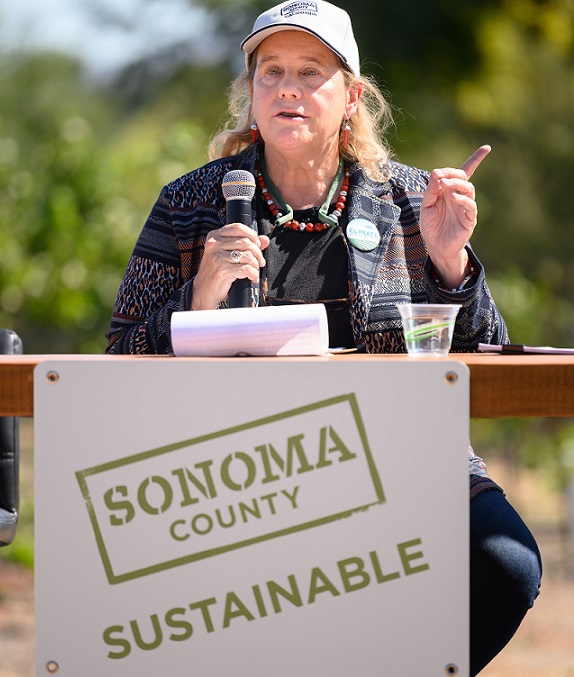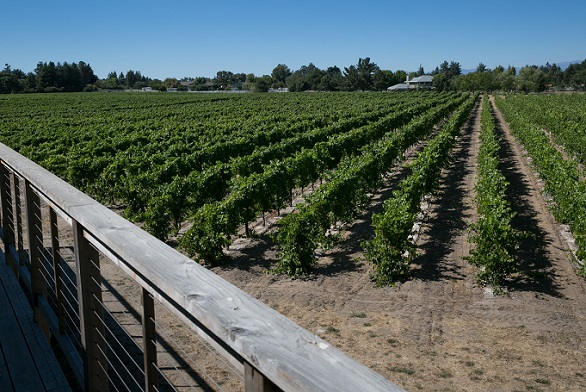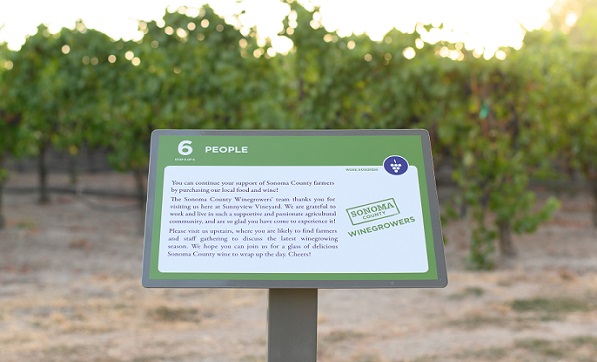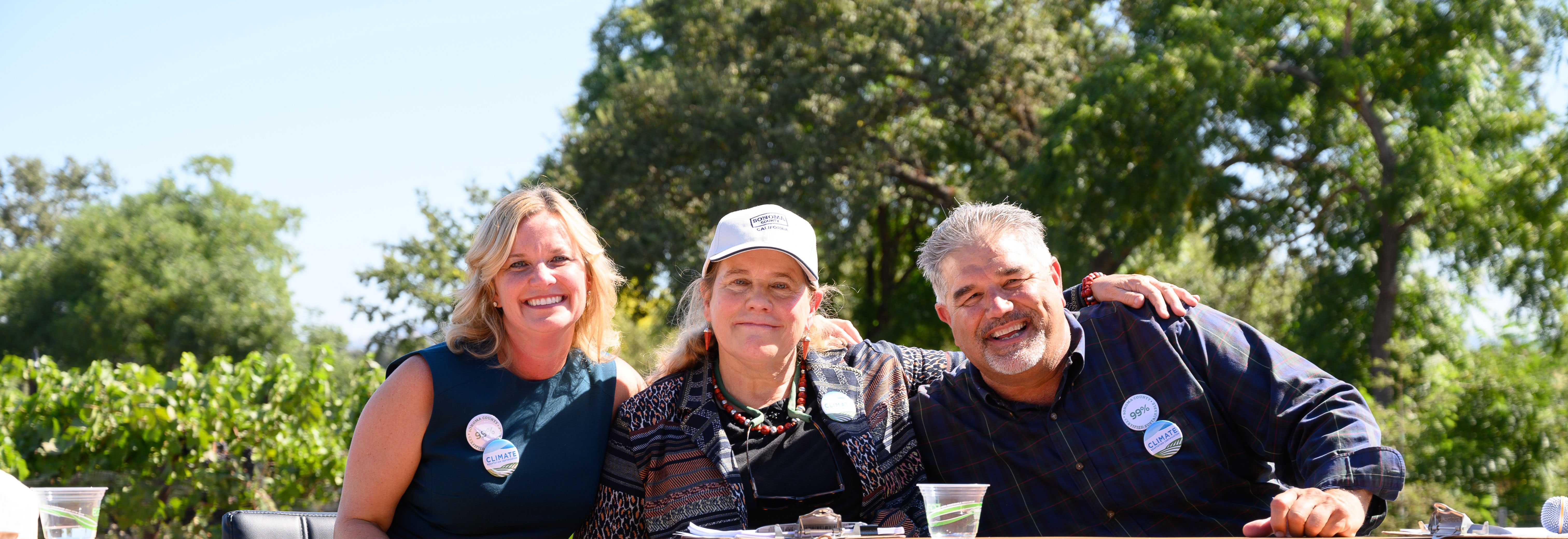In September 2019, Sonoma County’s local wine grape growers had reason to celebrate. They had just announced that more than 99% of the vineyards in the county had achieved sustainable certification, something no other wine growing region in the world has accomplished. In 2014, Sonoma County Winegrowers, the association representing the local winegrowing community, announced the region’s commitment to be the first fully certified wine region in the world in five years. Meeting this audacious goal was exciting, and local growers were ready to celebrate this community-wide effort.
Of course, there was an inevitable question lingering. What’s next? For years, Sonoma County Winegrowers had focused on sustainability. It was a goal that was measurable and, ultimately, attainable. But how could Sonoma County continue to lead the global conversation on winegrowing stewardship?
The answer for Sonoma County’s new direction was delivered by a long-time partner. Laurel Marcus is the executive director and restoration ecologist for the California Land Stewardship Institute (CLSI). She created Fish Friendly Farming, one of the four approved sustainability certification programs that the local winegrowers in Sonoma had used for their vineyards. Her expertise in ecology, conservation and agriculture is well-known and highly respected. In recent years, Marcus (below) developed a first-of-its-kind climate certification program that examined best practices for carbon sequestration, greenhouse gas (GHG) reductions and sustaining economic viability on farms.

Her idea was to holistically study a specific piece of land, in this case a vineyard and its surrounding ecosystem, for its unique natural features (soil type, topography, weather patterns and surrounding wild land and biodiverse natural habitats) and history (age of vineyard, other agricultural usage, replanting). Then this information is put into the COMET Farm model which calculates both carbon sequestration and GHG reductions associated with different soil management practices. Several other calculators are used for plantings and natural areas. The model produces several scenarios and a custom farm plan is then created to sequester carbon and reduce GHG on the specific piece of property. This process quantifies results by individual farming practices using sophisticated and accurate tools and incorporates the growing conditions and needs of each vineyard.
Sound complicated? It is. Each vineyard property is as unique and specific as the winegrower who farms it. But the program is also thorough, data-driven, and very promising for the future of ag. When Marcus presented the program to Sonoma County Winegrowers, as well as the opportunity to be the exclusive partner for the launch and pilot, there was no hesitation. The group knew that this was the most important thing they could do locally to make a global impact. They recognised that agriculture could be part of the climate solution on a local level. CLSI, in partnership with the Sonoma County Winegrowers, launched the program in early 2020 with 19 vineyards.
“Sonoma County is so geographically diverse, it is a perfect place to discover best practices for climate mitigation,” said Laurel Marcus. “There are so many soil types, differences in topography and weather influences, that there are endless property types to study.”

One of the vineyards participating in the study is Sunnyview (above), a 15-acre Pinot Noir vineyard in Russian River Valley, which is also home to Sonoma County Winegrowers’ offices. The vineyard owners, the Dutton family, farm about 1,200 acres of grapes in Western Sonoma County, and have been farming in the area for five generations. They are busy implementing the practices from their climate farm plan, including changes to tillage practices, planting a cover crop and planting hedgerows that will act as habitats for beneficial insects and pollinators.
“The farm plan is comprehensive, but pragmatic,” said Steve Dutton. “I think that’s key. Farmers are already up against so much: weather, regulations, farming costs, pests, it is important that these best practices are practical and have a proven impact on climate factors. I am happy to be a part of making a positive change and look forward to applying the learning to all of our vineyards.”
Both Sonoma County Winegrowers and the Duttons have big plans for Sunnyview. It is being turned into a demonstration vineyard, where other winegrowers, media or members of the wine trade can visit and get a first-hand look at changes proven to make a difference in GHG levels.
“Climate issues are abstract and can feel overwhelming, so we would love to have a place where we could demonstrate local solutions and inspire others to implement change. Our farmers have always been forward-thinking and this is another opportunity for Sonoma County to show leadership in sustainability and climate adaptation,” said Karissa Kruse, President of Sonoma County Winegrowers.
Another difficulty with climate mitigation, according to Marcus, is that some practices are effective in reducing carbon dioxide, but could generate other GHG emissions. For example, a farmer who is currently using a “full till” method may intuitively think he or she can make a positive impact by going to a “no till” model. However, a “no till” method on a vineyard can cause higher moisture levels which can generate nitrous oxide, a GHG that is almost 300 times more potent than carbon dioxide. These lessons are a reminder that the implementation of practices is incredibly site-specific, needing careful thought and quantitative analysis.
Eventually, the findings from the program will help others with similar geographical features on their properties to determine the best solutions for their own farming operations. All vineyards that have completed farm plans can obtain a third-party Climate Adaptation Certification.
'It’s about one thing – achieving a balanced system'Marcus has her work cut out. With the possibilities in geographical elements and a program that can be implemented on ag land beyond vineyards, there is no lack of discovery and positive change that can be made. Sonoma County is just the beginning.
“It’s about one thing – achieving a balanced system. If you can find one thing you can do on your farm that generates several positive impacts, that’s great progress,” said Marcus.
Kruse added: “We are thrilled to work with Laurel Marcus and be pioneers in this Climate Adaptation Certification. We believe strongly that climate impact success will take local solutions and that our winegrowers can once again lead the winegrowing community in this effort.”














.png)






